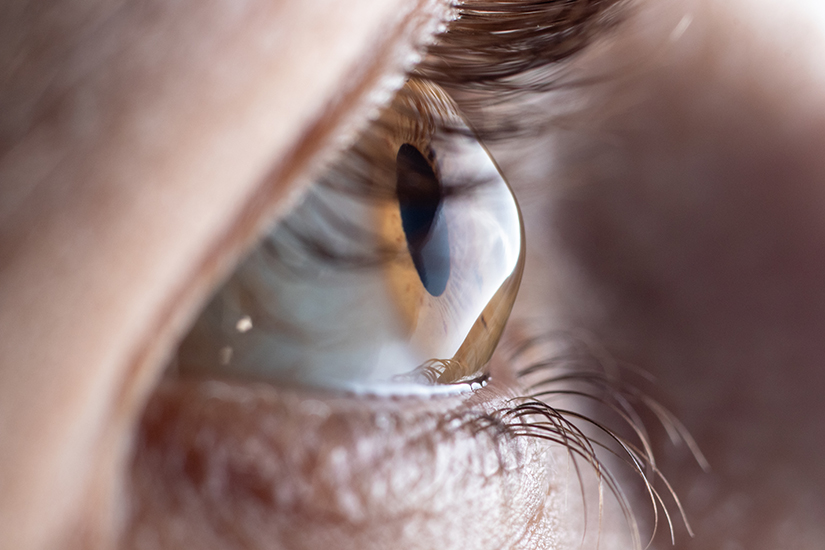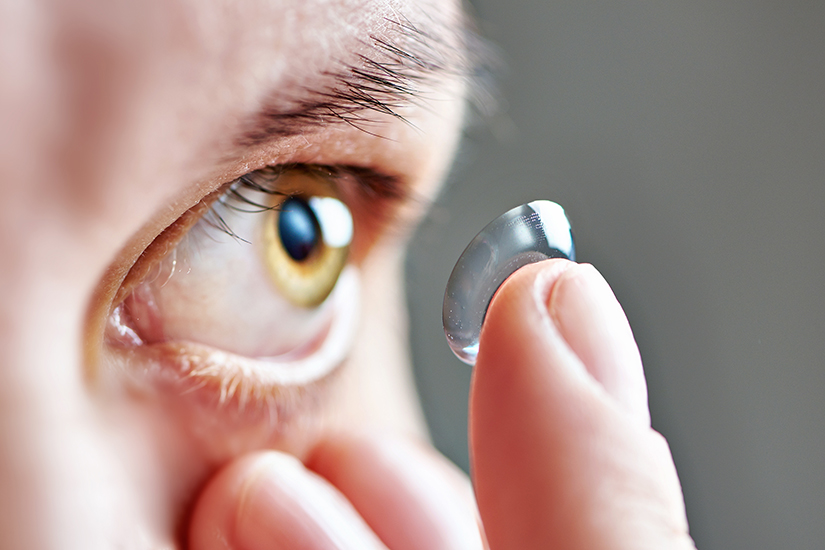Keratoconus is a rare, progressive disease that affects the cornea, which is the clear, transparent layer at the front of the eye. The cornea is responsible for focusing the light that comes into your eye onto the retina for clear, sharp vision. Keratoconus causes the corneal tissue to thin out and bulge into a cone-like shape which deflects the light entering the eye and distorts vision.
Causes of Keratoconus

The exact cause of keratoconus is not known. The disease usually starts to appear in the late teens or twenties and can affect one or both eyes, usually progressing at a slow pace and slowing or stabilizing after around 10-20 years. It is believed that there is a genetic component as often it runs in families.
New research suggests that there may be a link between keratoconus and oxidative damage which weakens the cornea. There is also an association with overexposure to ultraviolet (UV) radiation from the sun and chronic eye irritation.
Symptoms of Keratoconus
With the gradual change in the shape of the cornea, vision becomes progressively worse. The patient may experience nearsightedness, astigmatism, distorted vision (straight lines look wavy), blurry vision, light sensitivity and glare, and eye redness or swelling. Typically, patient’s eyeglass prescription will change often as the vision becomes worse and contact lenses will be difficult to wear due to discomfort and improper fit.
When keratoconus become more severe (which usually takes a long time however on occasion can happen rather quickly), the cornea can begin to swell and form scar tissue. This scar tissue can result in even further visual distortion and blurred vision.
Treatment for Keratoconus
In the early stages of the disease, standard eyeglasses and soft contact lenses will usually correct the nearsightedness and astigmatism experienced by the patient. As the disease progresses however, glasses and soft contact lenses may no longer correct vision and soft lenses may become uncomfortable. This is when other forms of vision correction will be recommended.
Gas Permeable and Scleral Contact Lenses

At the more advanced stage of keratoconus rigid gas permeable (RGP) contact lenses, scleral or semi-scleral lenses may be used for increased comfort and visual acuity. Since they are more rigid, RGP and scleral lenses are able to create a smooth, round shape around the cornea, creating a smoother surface for better vision. Scleral or semi-scleral lenses have a larger diameter which covers the entire cornea and reaches over into the white part of the eye, which is known as the sclera. Many patients find these more comfortable than regular RGPs and find that they move around less when the eyes move. The main disadvantage of these rigid lenses is that for some, they are somewhat less comfortable than soft lenses and they must be continually refit as the shape of the eye changes.
Whether it is glasses or contact lenses being used to correct vision, patients will likely have to undergo many tests and prescription changes as their vision needs change.
Intacs
Intacs are small, surgically implanted plastic inserts which are placed on the cornea to flatten it back to shape. Usually they are able to restore clear vision, with the continued use of glasses. Intacs are often recommended when contact lenses and eyeglasses are no longer able to correct vision adequately. Intacs take about 10 minutes to insert and can delay the need for corneal transplant.
Corneal Crosslinking (CXL)
In corneal crosslinking, a UV light and eye drops are used to strengthen and stiffen the cornea which helps to reduce bulging and restore the cornea to its natural shape.
Corneal Transplant
When corneal scarring occurs and eyeglasses and contact lenses no longer help, doctors may suggest a corneal transplant to replace the corneal with healthy donor tissue to restore vision. Most patients will still require eyeglasses or contact lenses for clear vision following the transplant.
Keratoconus is a condition that requires ongoing treatment by a qualified eye doctor. If you or a loved one suffers from this disease make sure that you find an eye doctor that you like and trust to accompany you on this journey.

